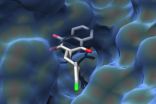(Press-News.org) Many women experience bothersome urine loss with laughing, coughing and sneezing (stress urinary incontinence) AND on their way to the bathroom (urge urinary incontinence). When women experience both types of urine leakage, their condition is called mixed urinary incontinence. It is estimated that 20 to 36 percent of women suffer from mixed urinary incontinence, which is challenging to diagnose and treat because symptoms vary and guidelines for treatment are not clear.
A clinical review entitled "Clinical Crossroads – Female Mixed Urinary Incontinence" by Deborah L. Myers, director of the Division of Urogynecology and Reconstructive Pelvic Surgery at Women & Infants Hospital of Rhode Island and The Warren Alpert Medical School of Brown University, has been published in the May 21, 2014 edition of the Journal of the American Medical Association (JAMA).
"Because mixed urinary incontinence involves both types of incontinence, it is difficult to treat. Our goal was to review the diagnosis and management of mixed urinary incontinence in women, with a focus on current available evidence," said Dr. Myers.
Dr. Myers reviewed 73 published articles that discussed the prevalence, diagnosis, results, and treatment of mixed urinary incontinence. She found that there is high-quality evidence for treating urinary incontinence with weight loss, for treating stress urinary incontinence with surgery, and for treating urge urinary incontinence with medications.
"However, there is a lack of direct, high quality evidence for treating women with mixed urinary incontinence, as well as an absence of clear, diagnostic criteria and management guidelines for these patients. Because of this, treatment usually begins with conservative management emphasizing the most bothersome component," continued Dr. Myers. "There is a clear need for randomized trials in women with mixed urinary incontinence."
Women & Infants Hospital is currently a member of the Pelvic Floor Disorders Network (PFDN), a team of doctors and researchers from eight clinical research centers around the country funded by the National Institutes of Health to improve the level of knowledge about pelvic floor disorders such as an overactive bladder. Through research studies, the team will be able to identify the most effective ways to care for women.
Through their participation in the Pelvic Floor Disorders Network, Dr. Myers and her colleagues are currently recruiting patients for the ESTEEM Study – Effects of Surgical Treatment Enhanced with Exercise for Mixed Urinary Incontinence. Vivian Sung, MD, MPH, of Women & Infants Hospital and the Alpert Medical School, is the principal investigator of this national study comparing two approaches for treating mixed urinary incontinence (MUI) in women, a midurethral sling alone or a midurethral sling combined with behavioral pelvic floor muscle therapy before and after surgery.
INFORMATION:
For information about this and other studies at Women & Infants Division of Urogynecology and Reconstructive Pelvic Surgery, call (401) 453-7560 or visit womenandinfants.org/womenshealth/urogynecology.
About Women & Infants Hospital
Women & Infants Hospital of Rhode Island, a Care New England hospital, is one of the nation's leading specialty hospitals for women and newborns. A major teaching affiliate of The Warren Alpert Medical School of Brown University for obstetrics, gynecology and newborn pediatrics, as well as a number of specialized programs in women's medicine, Women & Infants is the eighth largest stand-alone obstetrical service in the country with nearly 8,400 deliveries per year. In 2009, Women & Infants opened the country's largest, single-family room neonatal intensive care unit.
New England's premier hospital for women and newborns, Women & Infants and Brown offer fellowship programs in gynecologic oncology, maternal-fetal medicine, urogynecology and reconstructive pelvic surgery, neonatal-perinatal medicine, pediatric and perinatal pathology, gynecologic pathology and cytopathology, and reproductive endocrinology and infertility. It is home to the nation's only mother-baby perinatal psychiatric partial hospital, as well as the nation's only fellowship program in obstetric medicine.
Women & Infants has been designated as a Breast Center of Excellence from the American College of Radiography; a Center of Excellence in Minimally Invasive Gynecology; a Center for In Vitro Maturation Excellence by SAGE In Vitro Fertilization; a Center of Biomedical Research Excellence by the National Institutes of Health; and a Neonatal Resource Services Center of Excellence. It is one of the largest and most prestigious research facilities in high risk and normal obstetrics, gynecology and newborn pediatrics in the nation, and is a member of the National Cancer Institute's Gynecologic Oncology Group and the National Institutes of Health's Pelvic Floor Disorders Network.
Clinical review published in JAMA
2014-06-06
ELSE PRESS RELEASES FROM THIS DATE:
Prostate cancer biomarkers identified in seminal fluid
2014-06-06
Improved diagnosis and management of one of the most common cancers in men – prostate cancer – could result from research at the University of Adelaide, which has discovered that seminal fluid (semen) contains biomarkers for the disease.
Results of a study now published in the journal Endocrine-Related Cancer have shown that the presence of certain molecules in seminal fluid indicates not only whether a man has prostate cancer, but also the severity of the cancer.
Speaking in the lead-up to Men's Health Week (9-15 June), University of Adelaide research fellow and lead ...
Toward a better drug against malaria
2014-06-06
This news release is available in German.
A research team led by Prof. Dr. Carola Hunte of the University of Freiburg/ Germany has succeeded in describing how the antimalarial drug atovaquone binds to its target protein. The scientists used x-ray crystallography to determine the three-dimensional structure of the protein with the active substance bound. The drug combination atovaquone-proguanil (Malarone®) is a medication used worldwide for the prevention and treatment of malaria. The data and the resulting findings concerning the mode of action of atovaquone could ...
Football for untrained 70-year-old men
2014-06-06
Research carried out by the Copenhagen Centre for Team Sport and Health in Denmark shows that untrained elderly men get markedly fitter and healthier as a result of playing football (soccer). After only 4 months of twice-weekly 1-hour training sessions, the men achieved marked improvements in maximum oxygen uptake, muscle function and bone mineralization.
Later today, three scientific articles will be published in the Scandinavian Journal of Medicine & Science in Sports describing the fitness and health effects of football training for 63‒75-year-old untrained men. ...
Deadly diseases overlooked for too long, scientists say
2014-06-06
Decades of neglect have allowed infectious diseases to devastate the lives of thousands of people in the developing world, a study reveals.
Researchers say three diseases in particular – anthrax, brucellosis and bovine tuberculosis – have failed to receive the official recognition and funding needed to combat them effectively.
All three impact greatly on human and animal health in developing nations, posing a major threat to safe and plentiful food supplies.
The disorders – known as zoonotic diseases – are spread between animals and humans. They are common ...
Saving trees in tropics could cut emissions by one-fifth, study shows
2014-06-06
Reducing deforestation in the tropics would significantly cut the amount of carbon dioxide emitted into the atmosphere – by as much as one-fifth – research shows.
In the first study of its kind, scientists have calculated the amount of carbon absorbed by the world's tropical forests and the amounts of greenhouse gas emissions created by loss of trees, as a result of human activity.
They found that tropical forests absorb almost two billion tonnes of carbon each year, equivalent to one-fifth of the world's carbon emissions, by storing it in their bark, leaves and soil. ...
York scientists provide new insights into biomass breakdown
2014-06-06
Scientists at the University of York are playing a key role in the quest for a better understanding of how a recently discovered family of enzymes can degrade hard-to-digest biomass into its constituent sugars.
The enzymes – lytic polysaccharide monooxygenases (LPMOs) – are secreted by both fungi and bacteria and have the ability to 'chip away' at cellulose and other intractable materials. This allows cellulosic materials such as plant stems, wood chips and cardboard waste, as well as other tricky polysaccharides such as insect/crustacean shells, to be broken down.
Finding ...
Infection in malaria-transmitting mosquito discovered
2014-06-06
Boston, MA – Researchers have found the first evidence of an intercellular bacterial infection in natural populations of two species of Anopheles mosquitoes, the major vectors of malaria in Africa. The infection, called Wolbachia, has been shown in labs to reduce the incidence of pathogen infections in mosquitoes and has the potential to be used in controlling malaria-transmitting mosquito populations.
"Wolbachia is an interesting bacterium that seems perfectly suited for mosquito control. However, there were strong doubts that it could ever be used against field Anopheles ...
Three gene networks discovered in autism, may present treatment targets
2014-06-06
A large new analysis of DNA from thousands of patients has uncovered several underlying gene networks with potentially important roles in autism. These networks may offer attractive targets for developing new autism drugs or repurposing existing drugs that act on components of the networks.
Furthermore, one of the autism-related gene pathways also affects some patients with attention-deficit hyperactivity disorder (ADHD) and schizophrenia—raising the possibility that a class of drugs may treat particular subsets of all three neurological disorders.
"Neurodevelopmental ...
Asymmetric continental margins and the slow birth of an ocean
2014-06-06
When South America split from Africa 150 to 120 million years ago, the South Atlantic formed and separated Brazil from Angola. The continental margins formed through this separation are surprisingly different. Along offshore Angola 200 km wide, very thin slivers of continental crust have been detected, whereas the Brazilian counterpart margin features an abrupt transition between continental and oceanic crust.
For decades, geoscientists have struggled to explain not only why the amount of thinning and the geometries of opposite rifted continental margin are not symmetric, ...
Text messaging program helps smokers fight the urge to light up
2014-06-06
WASHINGTON, DC (June 6, 2014) — More than 11 percent of smokers who used a text- messaging program to help them quit did so and remained smoke free at the end of a six- month study as compared to just 5 percent of controls, according to a new report by researchers at Milken Institute School of Public Health at the George Washington University (Milken Institute SPH.)
"Text messages seem to give smokers the constant reminders they need to stay focused on quitting," says Lorien C. Abroms, ScD, MA, an associate professor of prevention and community health at Milken Institute ...


